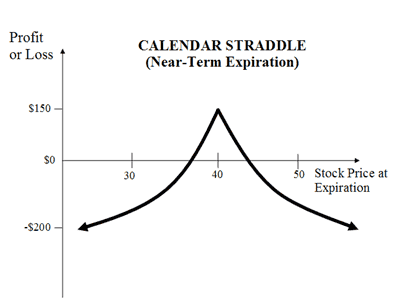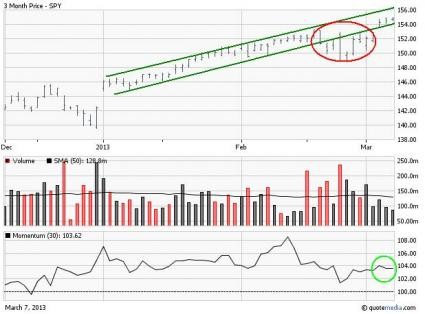Ratio Spread ETF Option Strategy Explained
Post on: 19 Июль, 2015 No Comment

by Justin Kuepper on May 20, 2013 | ETFs Mentioned: SPY
Exchange-traded funds (“ETFs”) have become an invaluable tool for investors looking for exposure to every corner of the market. While ETFs provide investors with diversified exposure, stock options are a great way to further hone their effectiveness. In this article, we’ll take a look at how one such strategy can be used to capitalize on sideways markets [see also ETF Call And Put Options Explained ].
What Is a Ratio Spread Strategy?
Suppose an investor believes that the SPDR S&P 500 ETF (SPY, A ) will remain roughly even over the next month, but could drop significantly if politicians fail to resolve a budget deficit and spending cuts go into effect. Purchasing SPY obviously isn’t a good idea given these dynamics, but shorting SPY could tie up a lot of capital if the market trades sideways [see also ETF Protective Put Options Strategy Explained ].
By purchasing one in-the-money call option and selling two out-of-the-money call options, the investor can set up a ratio spread to capitalize on these dynamics. The strategy generates a profit from sideways price movement. with limited downside if those spending cuts do in fact send the S&P 500 into a dire tailspin; in fact, the only major risk is with the upside.
Here’s a diagram showing the strategy’s dynamics:
Who Is the Ratio Spread Strategy Right For?
The ratio spread strategy is ideal in cases where the investor expects the stock to remain at the same price with a bearish bias. In the example above, the investor was neutral on the market over the next month, but thought there could be a downturn. Rather than simply waiting on the sidelines, the ratio spread strategy lets investors remain active in the market
.In general, the strategy is considered to be neutral-bearish in nature, since the investor profits the most when the stock remains unchanged and experiences only small losses when it declines. On the flip side, the investor faces the greatest potential losses when the stock price rises in value, since the uncovered short call options could suffer from unlimited upside potential.
What Are the Risks/Rewards?
As previously mentioned, the ratio spread strategy has limited upside with potentially unlimited downside, since the two short calls generate an upfront income (upside) but could suffer from unlimited upside in the underlying ETF. Investors are, therefore, best off only using the ratio spread when they are certain that upside potential is unlikely [see 13 ETFs Every Options Trader Must Know ].
The maximum risk/reward profiles are:
- Maximum Profit occurs when the price of the underlying stock is equal to the strike price of the short calls. It’s equal to the strike price of the short call minus the strike price of the long call plus premiums received minus commissions paid.
- Maximum Loss occurs when the price of the underlying stock is greater than the strike price of the short calls. It’s equal to the price of the underlying minus the strike price of the short calls minus max profit plus commissions paid.

How to Use a Ratio Spread Strategy
Using the above example, let’s assume that the investor entered into a ratio spread strategy when SPY was trading at 162.00 by writing two 165.00 call options for $1.15 a piece and purchasing one 160 call option for $3.30. The net debit to enter the position would be $100, since the $330 to purchase the 160 call would be offset by $230 in written call income.
There are a few different scenarios that could then play out:
- Bearish – If the underlying stock falls below 160.00 per share, then all of the call options expire worthless and the loss is limited to the $100 debit to enter the trade.
- Neutral – If the underlying stock remains between 160.00 and 165.00, then the 160.00 call option is profitable and the two 165.00 call options expire, netting whatever the gain might be on the 160.00 call option minus the debit to enter the trade.
- Bullish – If the underlying stock rallies beyond 165.00, then the 160.00 call option is profitable, but the two short 165.00 call options will be increasingly underwater.
Investors have numerous options when it comes to managing a ratio spread position. For example, if the underlying ETF appreciates in value, investors can consider rolling out the ratio spread position to longer-term expiration dates at a modest loss. Or, the investor could sell the options at a loss before the expiration date in order to limit their losses [see How To Hedge With ETFs ].
The Bottom Line
The ratio spread strategy is a useful way for ETF investors to remain in the market during a neutral-bearish outlook. While equities may be undesirable to own, the option strategy provides a way to generate a profit from sideways movement and limit downside risk. However, investors should be aware that there’s potentially unlimited downside risk to the position.
[For more ETF analysis, make sure to sign up for our free ETF newsletter .]
Disclosure: No positions at time of writing.














